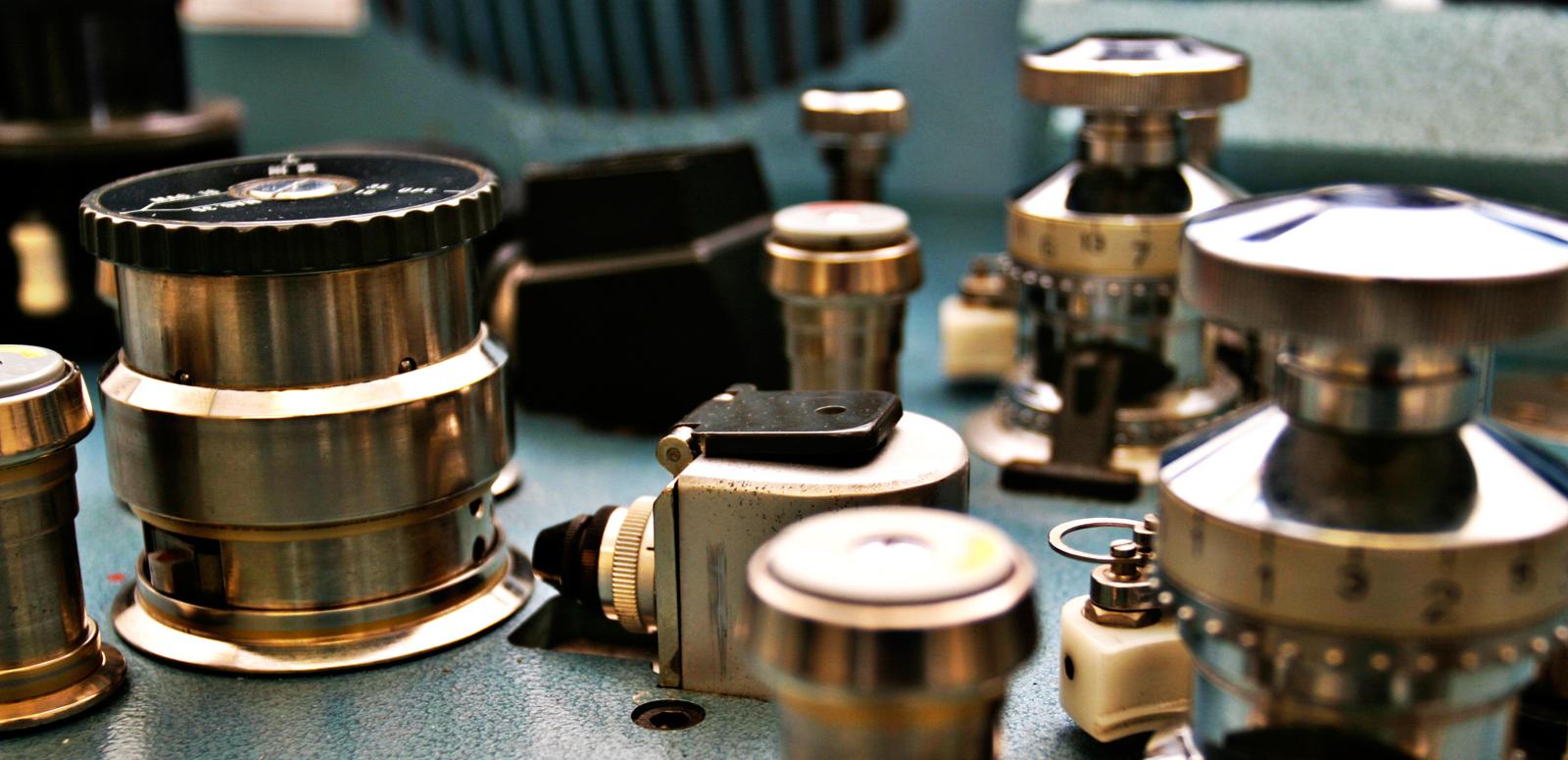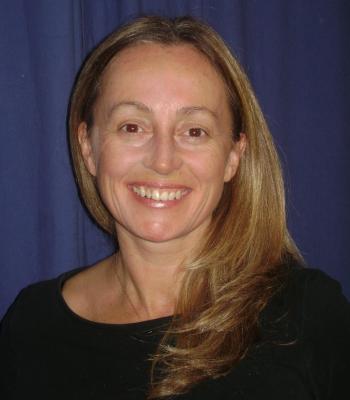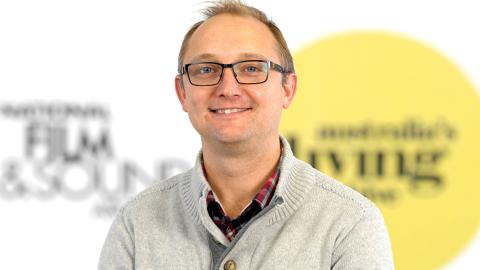

Staff Profile: Annie Breslin
Basking in the acoustics

Annie’s colourful and vibrant career spans television, film and stage, whilst she has also dabbled in yoga, teaching and mentoring. A love of film and history brought Annie to the NFSA a little over 16 months ago, but her passion and creativity started almost at birth.
Growing up in the idyllic northern Sydney suburbs, Annie knew at an early age what she wanted to be. Her early memories are filled with sound; her father, a music lover, took Annie and her siblings on journeys to acoustic spaces, recording the sounds of architectural marvels such as 'basking in the acoustics’ of St Mary’s Cathedral as it hosted Greek Orthodox masses.
A ‘child of a sound-aware father’, her father’s passion was the catalyst in her career choice or, as Annie says jokingly, ‘It’s all his fault! That’s where it all started!’
However, it was not until she left high school and began her career as a trainee in the ABC editing department in Sydney that her passion for the collaboration of film and sound was able to thrive. Working on a scene from Run from the Morning (1978), Annie was sent to the sound effects library with the vague instruction to find ‘office working sounds’. When matching the end of the scene to the sound of a filing cabinet drawer closing, Annie had her light bulb moment: she says, 'Who would have thought a filing cabinet could mean so much!’
Dingo secrets revealed
After a stint editing Four Corners at the ABC, Annie did the ‘obligatory travelling around Europe in a kombi van’ and came back to Sydney with contacts and a fresh start as a freelance editor. Her first major movie project presented itself soon after, as assistant editor on Puberty Blues (1981), where she synced rushes.
This job was followed shortly after by her vocal debut. A dying dog sound was needed for the iconic Australian dystopian action film Mad Max 2 (1981), so Annie stepped in and provided her best canine rendition. This would not be the last time she would be perfecting the sounds of a four-legged friend (or foe); in the Oscar-nominated Australian film based on the Lindy Chamberlain story, Evil Angels (1988), Annie made the sound of the mysterious dingo’s footsteps.
Another particularly gooey foley story involved oats and water in a small swimming pool, recording the squelchy sounds for footsteps in mud to match archival footage from the famous Damien Parer film Kokoda Front Line! for The Last Bastion (1984). The sound worked, yet made the foley studio smell for days afterwards!
Although Annie continued to work steadily over the years in projects ranging from The Last Bastion to High Tide (1987) and cult classic Young Einstein (1988), further study in editing led her to a position as Head of Sound at the Australian Film, Television and Radio School (AFTRS). There she co-wrote and introduced the first tertiary screen composition course in Australia.
After six years teaching sound at AFTRS, Annie took time out to raise a growing family. In the interim, she became a yoga teacher and florist. Her respective favourites? The Ardha chandrasana or half moon pose, and the Heliconia chartacea or 'Sexy Pink’ flower.
Natural storyteller
Annie’s return to sound editing was accomplished with her own studio and a flourish of independent and thought–provoking films and documentaries, subjects that are closely aligned to Annie’s personality as a natural storyteller. Girl in a Mirror: A Portrait of Carol Jerrems (2005), Ra Choi (2006), Unfinished Sky (2007), and Contact (2010) all deal with aspects of the social and cultural changes within Australian history. Baz Luhrmann’s epic Australia (2008) was one of the last major films she has worked on as a freelance sound editor.

It is no surprise that this personal passion paid off in her work: Annie was a recipient of an Australian Film Institute (AFI) award for Best Sound in 2008 for Unfinished Sky, and winner of the Australian Screen Sound Guild award for The Monkey’s Mask (2001), which coincided with a Centenary Medal for her contribution to the Australian film industry.
This interest in, and passion for, Australian culture would be the driving force behind Annie’s move to archival organisations. A position as the Film Preservation Manager at the National Archives of Australia (NAA) led to projects that reflected her love of culture and film. She pushed for the inclusion of audiovisual materials to be presented in the NAA exhibitions, particularly in Ticket to Paradise? (2014-15), which dealt with Australia’s post – Second World War migration program, and showcased many items from the NFSA collection.
My favourite things
‘We have such a huge variety of films in our collection. When it comes to soundtracks one of my favourite items is a film called Palisade (1987), which has the most beautiful sound design. I’m drawn to it and the many other film soundtracks we care for that leave enough aural space to let us hear our natural and man-made acoustic environments.’
This staff profile was published in October 2016 while Annie was a Senior Curatorial Officer at the NFSA.
The National Film and Sound Archive of Australia acknowledges Australia’s Aboriginal and Torres Strait Islander peoples as the Traditional Custodians of the land on which we work and live and gives respect to their Elders both past and present.


